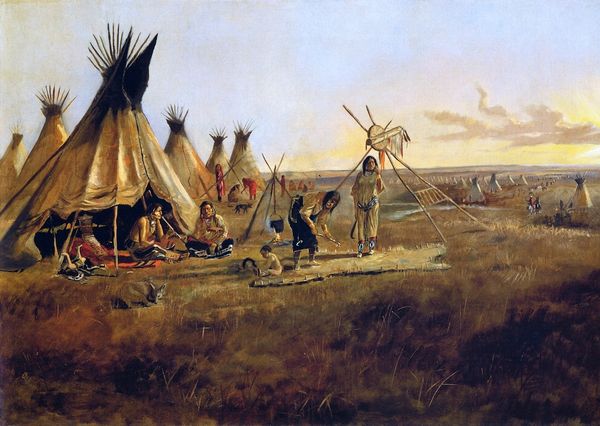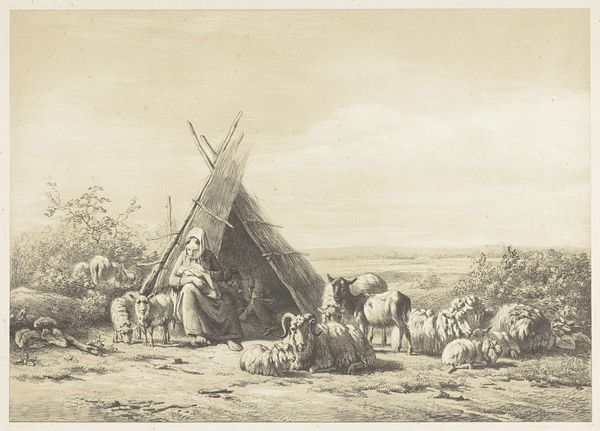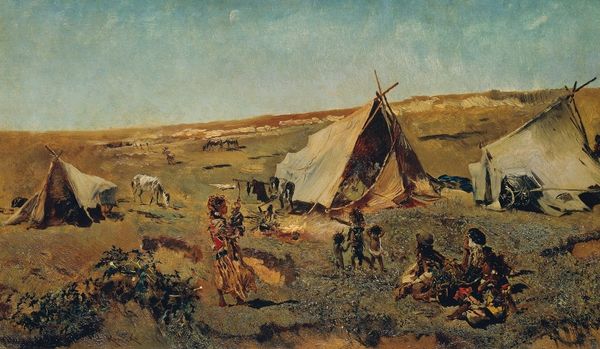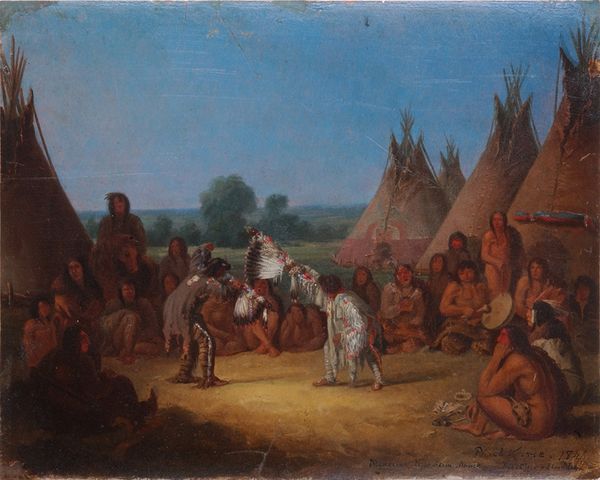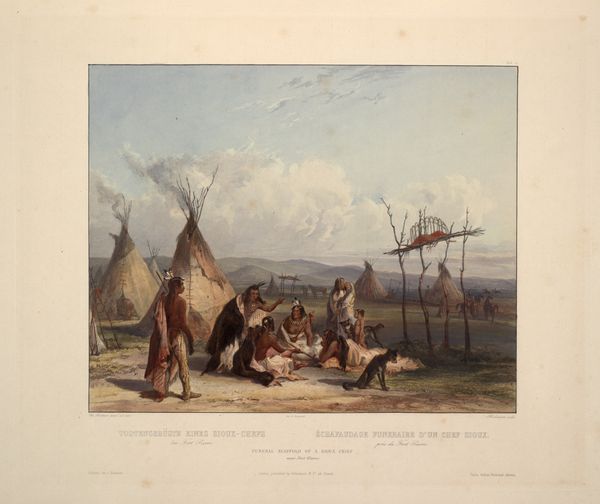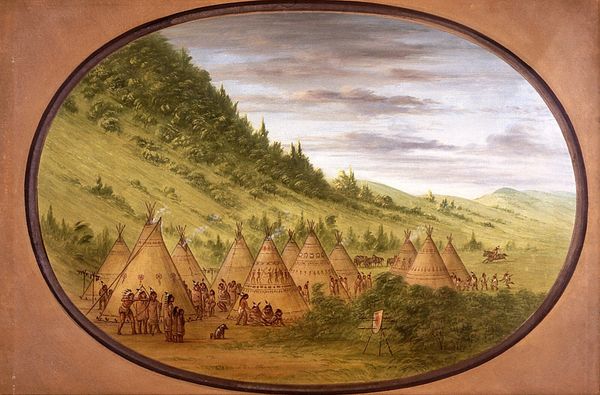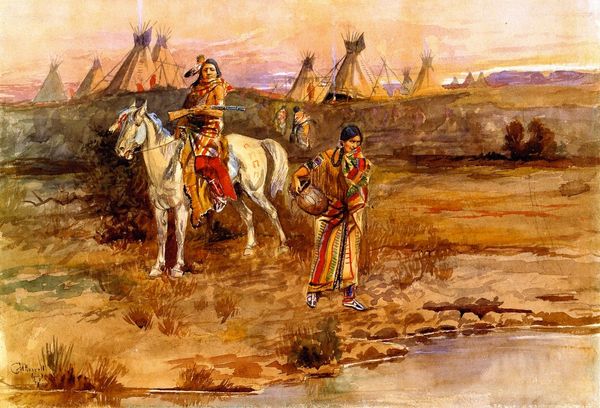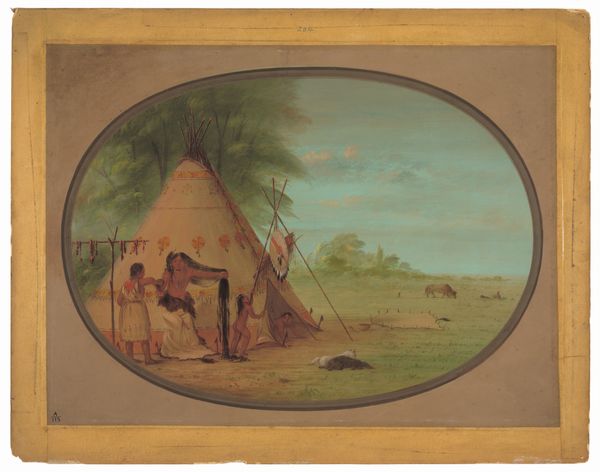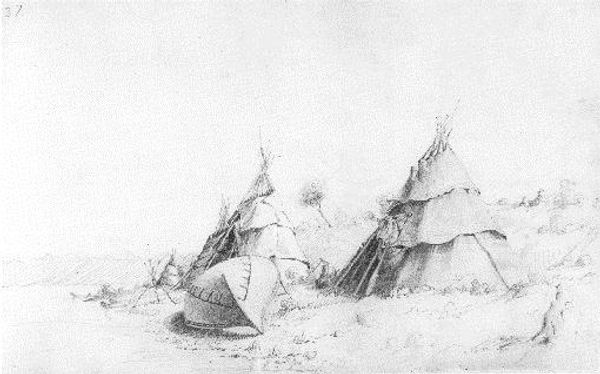
architecture
#
landscape
#
charcoal drawing
#
watercolour illustration
#
watercolor
#
architecture
Copyright: Public domain
Karl Bodmer made this watercolor of a Sioux teepee while traveling in the North American interior in the 1830s. This image offers insight into the public role of art as a tool for shaping perceptions of indigenous cultures. Bodmer, a European artist, was commissioned to document the American West, and his work inevitably reflected the biases and perspectives of his own culture. Look at the way he portrays the Sioux people and their dwellings. How does he balance accuracy with romanticism or exoticism? The teepees themselves, simple yet elegant in their design, become symbols of a way of life that was already under threat from westward expansion. To understand this artwork fully, we need to research the history of European exploration and colonization in North America, as well as the artistic conventions of the 19th century. We should consider, too, how such images were used to justify political agendas.
Comments
No comments
Be the first to comment and join the conversation on the ultimate creative platform.



